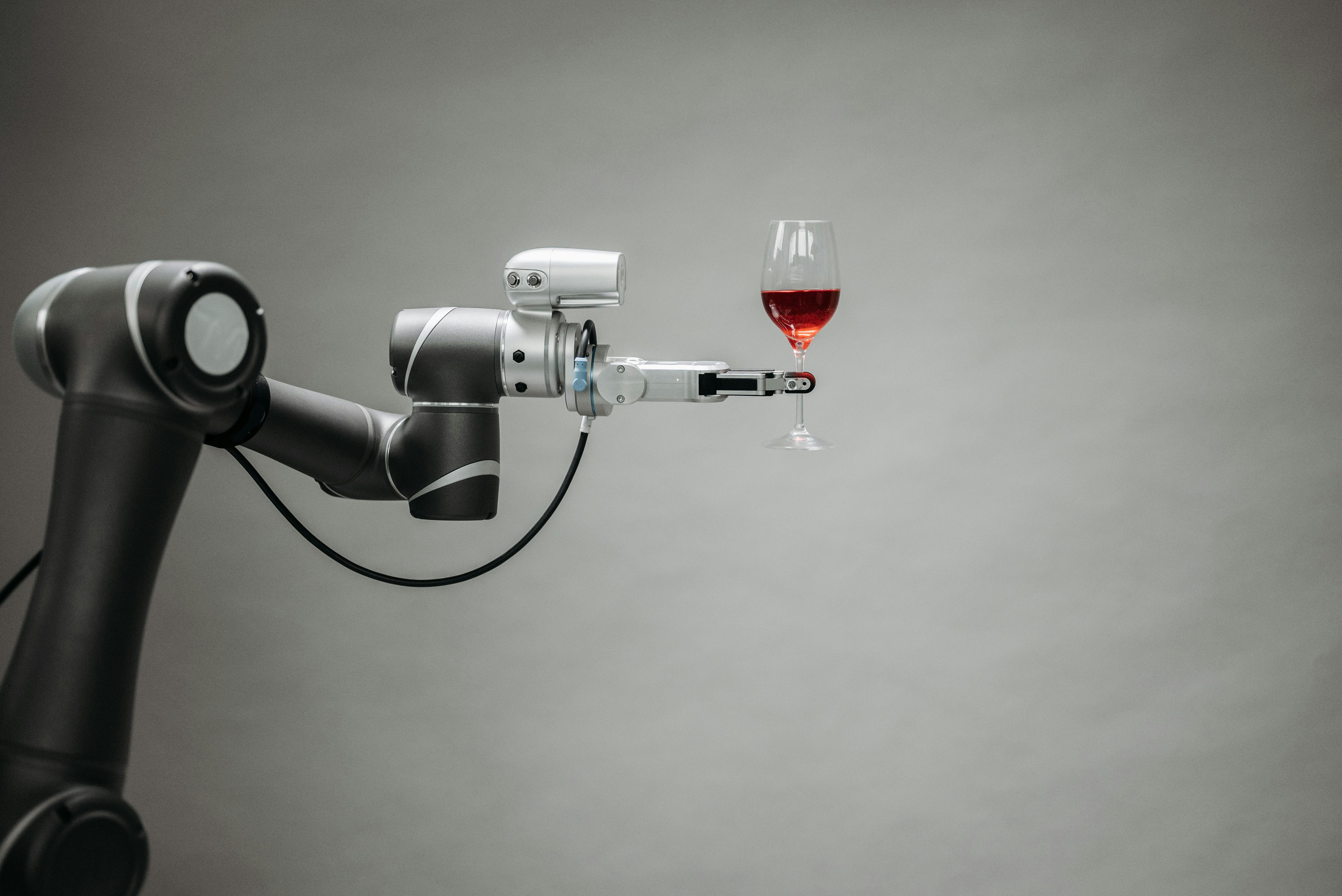In industrial automation and smart manufacturing, the ability of robotic arms to rotate as fluidly as a human wrist is not the result of a single component, but rather the synergy of two critical “invisible parts”: gears and bearings. Together, they form the core of robotic joints, ensuring every motion is both precise and smooth. These components, however, are not simply shaped from raw steel; they are the outcome of multiple sophisticated processes—CNC machining, heat treatment, and precision grinding—to meet the highest standards of accuracy and durability.

Photo by https://www.pexels.com/zh-tw/photo/8439176/
Gears: The Power Hub of Torque Transmission
When a robotic arm rotates or grips, gears are the key components that amplify or reduce torque. Any deviation in gear tooth accuracy can lead to vibration, wear, and a loss of motion precision.
Gear Manufacturing Processes:
- CNC Machining: Using five-axis CNC milling or hobbing machines, gears are initially cut to form with precise module and tooth spacing.
- Heat Treatment: Carburizing or quenching hardens the gear surface while retaining a tough core, ensuring both wear resistance and impact strength.
- Precision Grinding: Final machining on gear grinders achieves micron-level accuracy, enabling smoother transmission and lower noise.
Bearings: The Core of Smooth Rotation
While gears transmit power, rotation would be heavy and inefficient without bearings. Bearings provide low-friction support, allowing joints to move continuously and efficiently.
Bearing Manufacturing Processes:
- CNC Machining:High-precision turning and milling of inner and outer rings ensure roundness and concentricity.
- Heat Treatment: Vacuum heat treatment or induction hardening hardens the raceways, extending fatigue life.
- Precision Grinding: Ultra-precise grinding produces raceways with an extremely low surface roughness (Ra0.02μm), allowing balls or rollers to move with near-frictionless smoothness.
From Craftsmanship to Application: The Soul of Robotic Agility
Only after undergoing these rigorous processes can gears and bearings enable robotic arms to achieve near-seamless rotation. From high-speed operations on electronics assembly lines to delicate maneuvers in surgical robotics, these precision parts form the backbone of robotic performance.
Key Benefits:
- High-Precision Motion:Ensures accurate angles and positioning.
- Smooth Operation: Reduced friction minimizes vibration and noise.
- Durability and Reliability: Heat treatment and precision grinding extend component life while lowering maintenance costs.
- Wide Applicability: Suitable for automated assembly, logistics handling, medical assistance, and service robots.
In other words, the true agility of robots hinges on the depth of craftsmanship behind gears and bearings. These seemingly ordinary components are, in fact, the crystallization of modern manufacturing and the very soul of intelligent machinery.
Trends and Future Development
- Modular and Standardized Parts:Simplifies replacement and maintenance, boosting productivity.
- High-Performance Materials: Lightweight alloys, high-strength steels, and engineering plastics balance wear resistance and weight reduction.
- Smart Manufacturing:Integration of real-time monitoring and automated machining enhances consistency and precision.
Conclusion
In robotic arms, the precision processes behind gears and bearings—CNC machining, heat treatment, and precision grinding—are the key to achieving seamless motion. As material science and manufacturing accuracy continue to advance, robotic arms will become even more stable, reliable, and versatile, unlocking new potential for automation and smart manufacturing.














